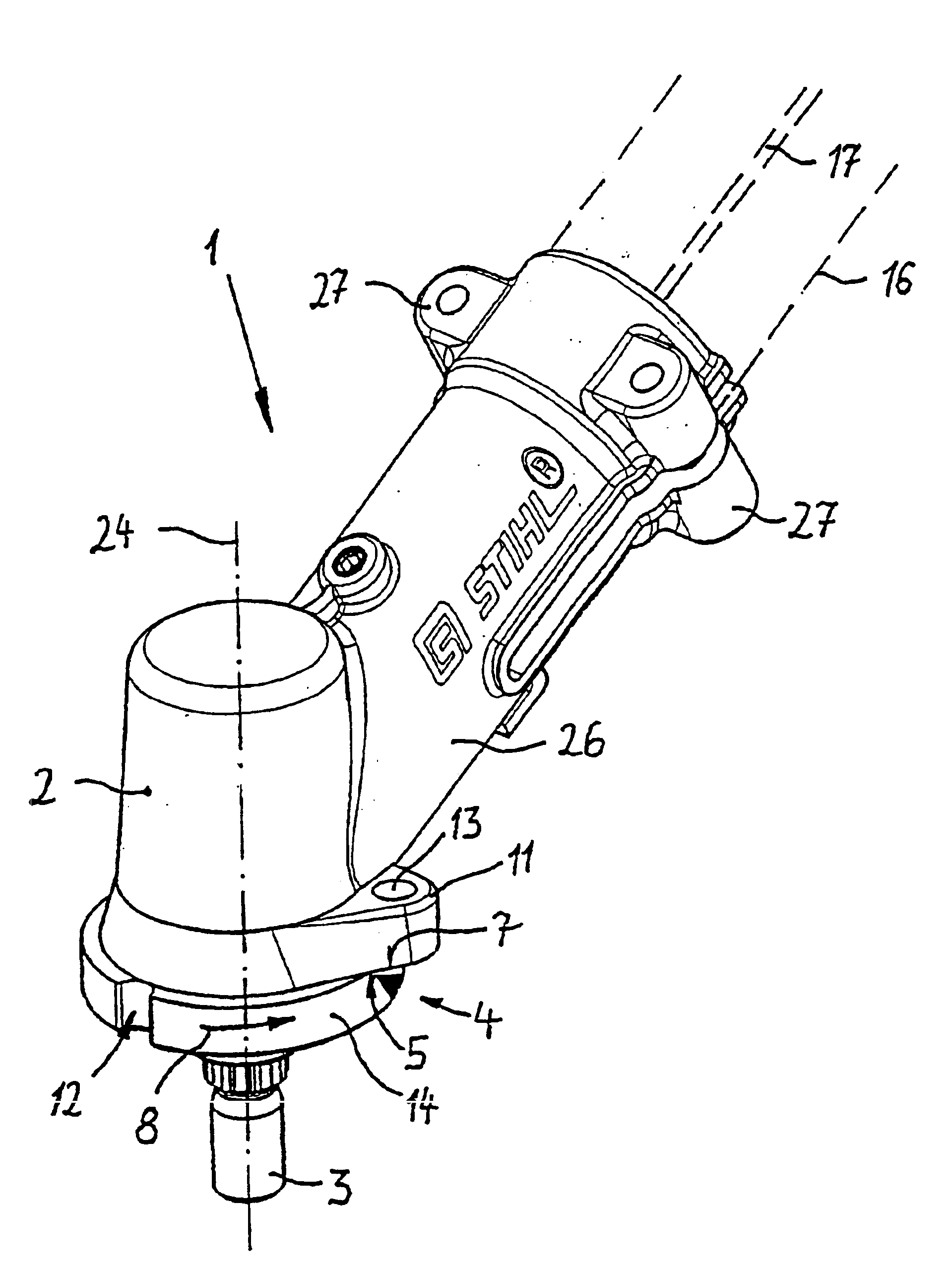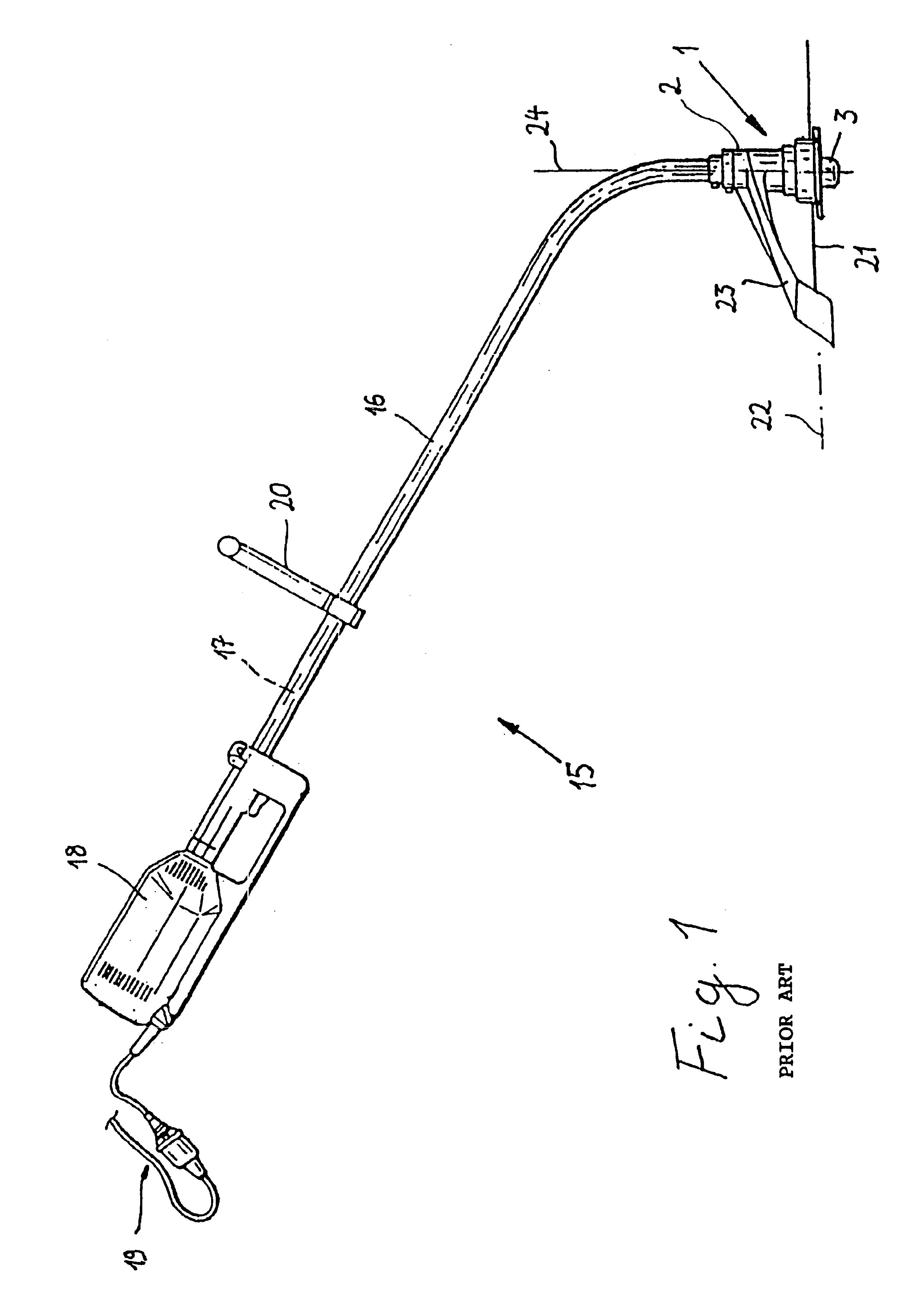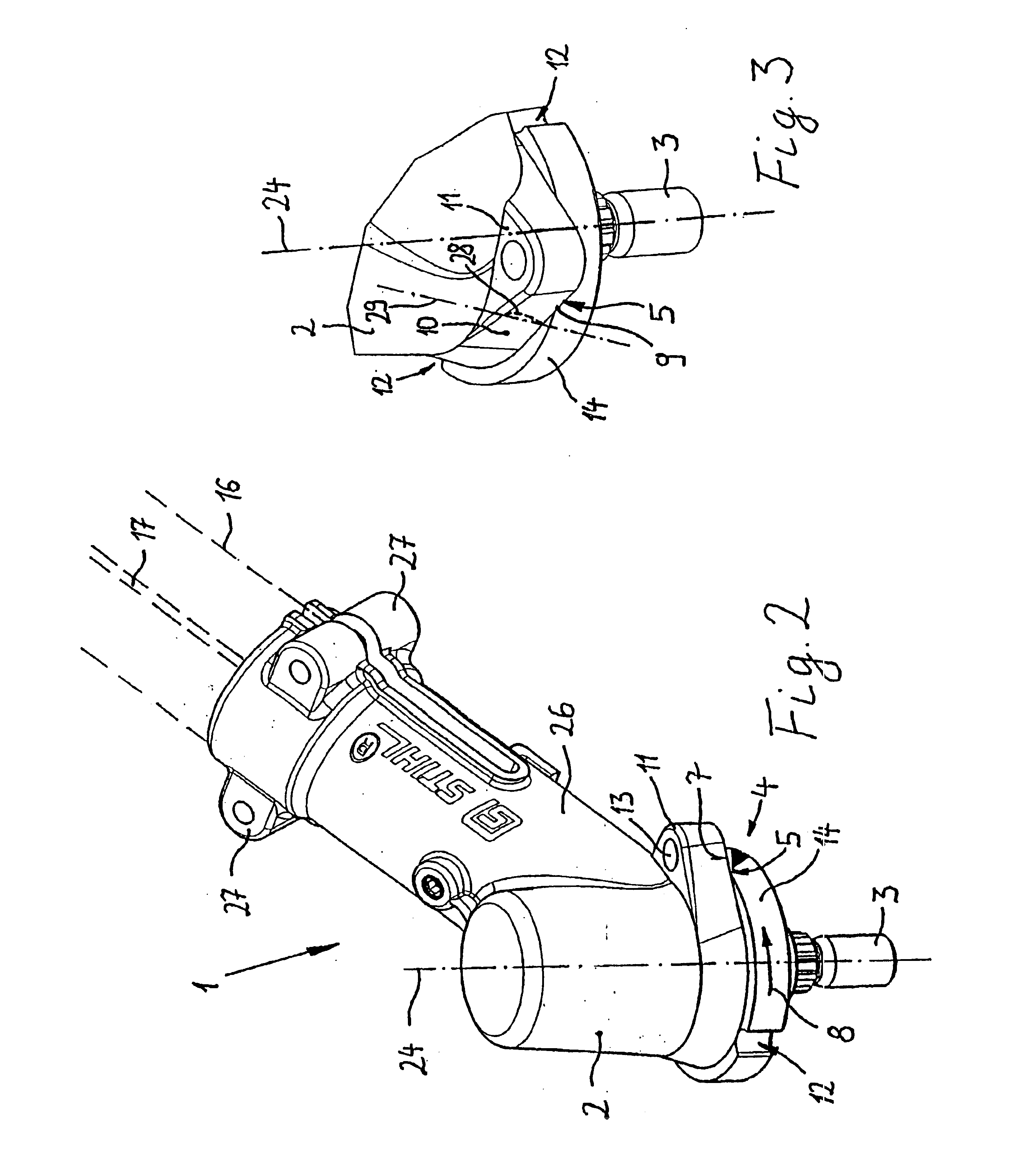Tool head of a trimmer
a technology of tool head and trimmer, which is applied in the field of tool head of brush cutter or trimmer, can solve problems such as the function of the trimmer being affected, and achieve the effects of improving the handling of the trimmer, and reducing the cost of the trimmer
- Summary
- Abstract
- Description
- Claims
- Application Information
AI Technical Summary
Benefits of technology
Problems solved by technology
Method used
Image
Examples
Embodiment Construction
Referring now to the drawings in detail, FIG. 1, in a side view and in general, shows a brush cutter or trimmer 15 having a guide tube 16, one end of which is provided with a drive unit 18 having a non-illustrated electric motor. The electric motor is supplied with operating voltage via a power cord 19. An internal combustion engine, for example a two-cycle or four-cycle engine, can also be provided as a drive motor. That end of the guide tube 16 that is opposite the drive unit 18 is angled off and is fixed in position on a tool head 1. The tool head 1 has a gear mechanism housing 2 in which a tool shaft 3 is rotatably mounted about an axis of rotation 24. A cutting tool 1 is fixed on the tool shaft 3 and is rotatably drivable, via the drive unit 18, in a plane of rotation 22 that is disposed perpendicular to the axis of rotation 24. Mounted in the guide tube 16 is an elastic drive shaft 17 that is introduced into the gear mechanism housing 2 coaxially to the axis of rotation 24. Th...
PUM
 Login to View More
Login to View More Abstract
Description
Claims
Application Information
 Login to View More
Login to View More - R&D
- Intellectual Property
- Life Sciences
- Materials
- Tech Scout
- Unparalleled Data Quality
- Higher Quality Content
- 60% Fewer Hallucinations
Browse by: Latest US Patents, China's latest patents, Technical Efficacy Thesaurus, Application Domain, Technology Topic, Popular Technical Reports.
© 2025 PatSnap. All rights reserved.Legal|Privacy policy|Modern Slavery Act Transparency Statement|Sitemap|About US| Contact US: help@patsnap.com



